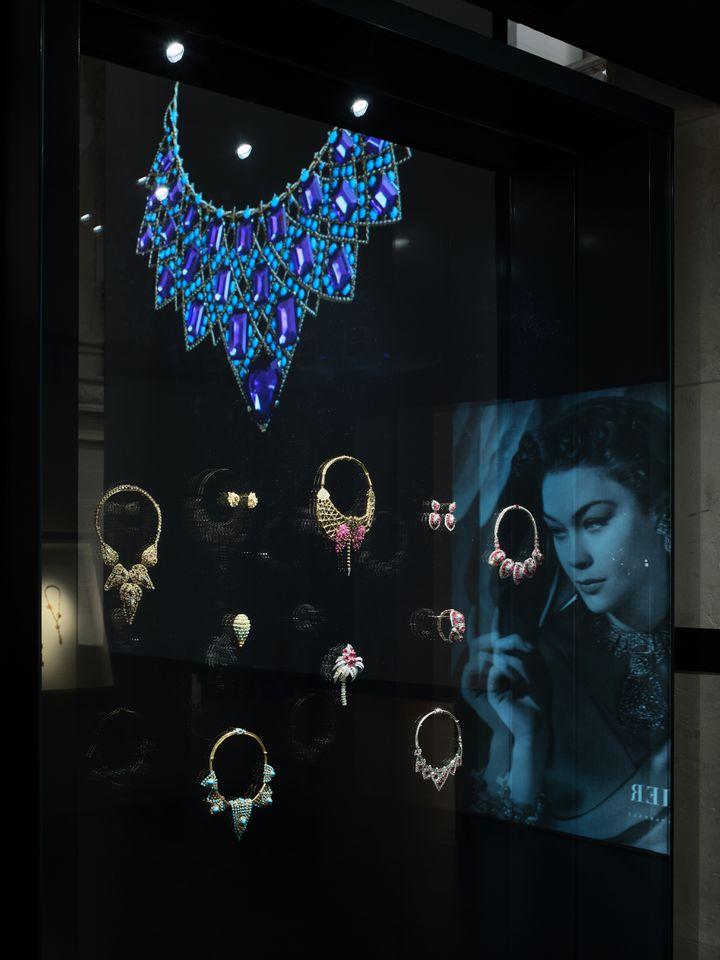The influence of the arts of Islam on the jewellery creation of the Cartier house, at mad in Paris

L'exposition Cartier et les arts de l’islam. Aux sources de la modernité - au Musée des Arts Décoratifs jusqu'au 20 février 2022 - montre de quelle manière les arts de l’islam ont influencé la production de bijoux et d’objets précieux de cette maison de haute joaillerie du début du XXe siècle à nos jours.
500 pieces-jewellery and objects from Cartier House, masterpieces of Islamic art, drawings, books, photographs and archival documents, among others-trace the origin of this interest in oriental motifs.
"we were able to reconstruct all the stages of creation"
"this is a completely new research presented in this collection," explains Judith Henon-Raynaud, assistant director of the department of Islamic arts at the Louvre, and one of the commissioners. For the first time in an exhibition dedicated to jewellery, "we were able to reconstruct all the stages of creation," says Evelyne Possémé, head curator of the Department of ancient and modern Jewellery at mad and also curator of the exhibition.
In the first part, the exhibition traces the origin of this interest in the arts and architecture of Islam through the Parisian cultural context of the early 20th century. The second part examines the repertoire of forms inspired by the arts of Islam from the beginning of the 20th century to the present day.
The Parisian cultural context
Created in 1847 by Louis-François Cartier, the house specializes in the sale of jewellery and artefacts: it designs its jewellery while reselling old pieces. At the beginning of the 20th century, Paris was the centre of the trade in Islamic art and it was certainly in major exhibitions of the time that Louis (one of the founder's grandsons) discovered these new forms.
From the beginning of the exhibition, the visitor is immersed in the shapes and motifs of Cartier's jewellery creations exhibited alongside masterpieces of the arts of Islam, such as the numerous works preserved in Louis Cartier's library and the collection of Islamic art he had assembled. In a succession of rooms immersed in darkness, you can find in poorly lit windows works, courtyard belts, mosaic coating panels, wooden boxes and marquetry, mirrors... They served as sources of inspiration for the cartoonists who then produced the Cartier Jewellery.

At that time, "a decisive part" of jewellery was inspired by the arts of Islam, "which allowed Cartier to become part of modernity in relation to art nouveau," Evelyne Possémé points out. The geometrical motifs "are taken from architecture, the bricks are inspired by the coatings of mosques in Central Asia," the Commissioner continues. The association of colors also comes from the Orient, like the use of green, "color of paradise", with the bright blue of the turquoises and the deep blue of the lapis-lazuli.
The exhibition also recounts Jacques Cartier (another grandson of the founder) travelling to India in 1911. He collects antique and contemporary jewellery for resale, inspiration or recomposition. Thus the flexibility of Indian jewellery gives rise to new frames and assemblages.
The central space of the nave completes this first part of the journey: here digital screens on which large images of jewellery are projected are adjoining contemporary jewellery pieces. The ingenious mechanism recomposes and decomposes a necklace by adding stratum by stratum the different stones that make up it.
Forms inspired by the arts of Islam
The second part of the exhibition is devoted to forms inspired by the arts of Islam. Here the Cartier jewels and objects are compared to Islamic works from the collections of the mad and the Louvre Museum.
The production under the artistic direction of Louis Cartier was marked by inspiration from the Iranian world and the book arts. The patterns that adorn the bindings are sometimes repeated as they are, but they are more often decomposed and recomposed to create a pattern. New combinations of colours and materials combine lapis lazuli and turquoise, combining the green of jade or emerald with the blue of lapis lazuli or sapphire.
In this section, you can admire adorable cigarette cases, lipstick tubes, lighters and powder magazines decorated with refined geometric motifs of incredible modernity.
A collector of Indian jewellery, she pushed the workshops to use complete Indian jewellery, which they disassembled and reassembled by juxtaposing the elements differently: tutti frutti, jumpers, and jewellery in volume characterized her productions of the second half of the 20th century.
- Prev
- Next







